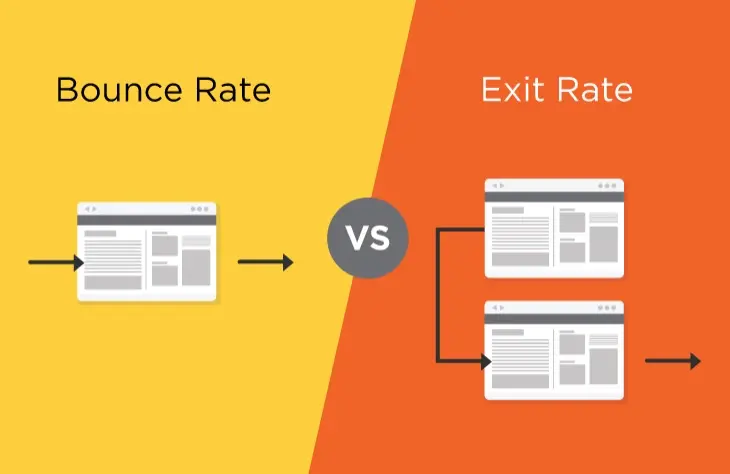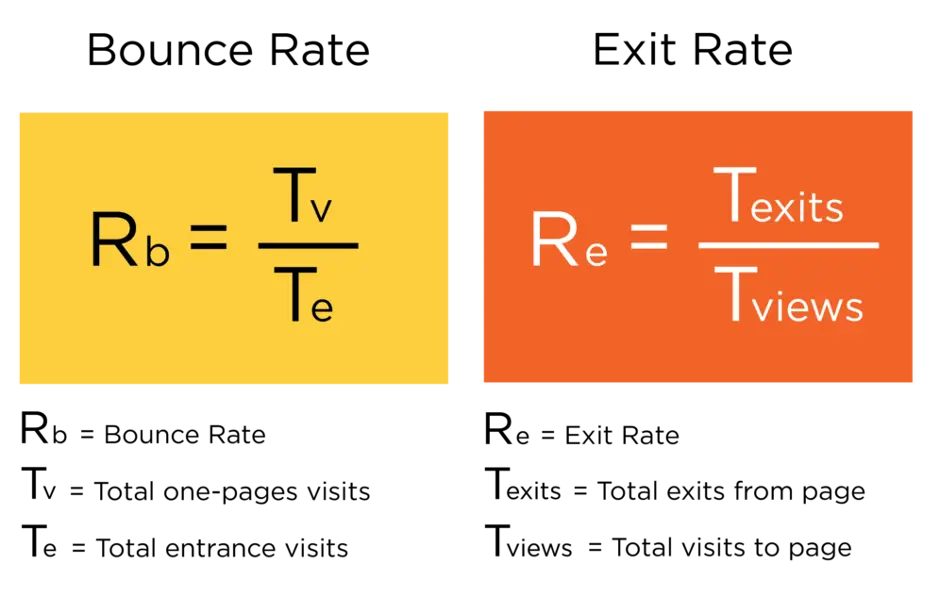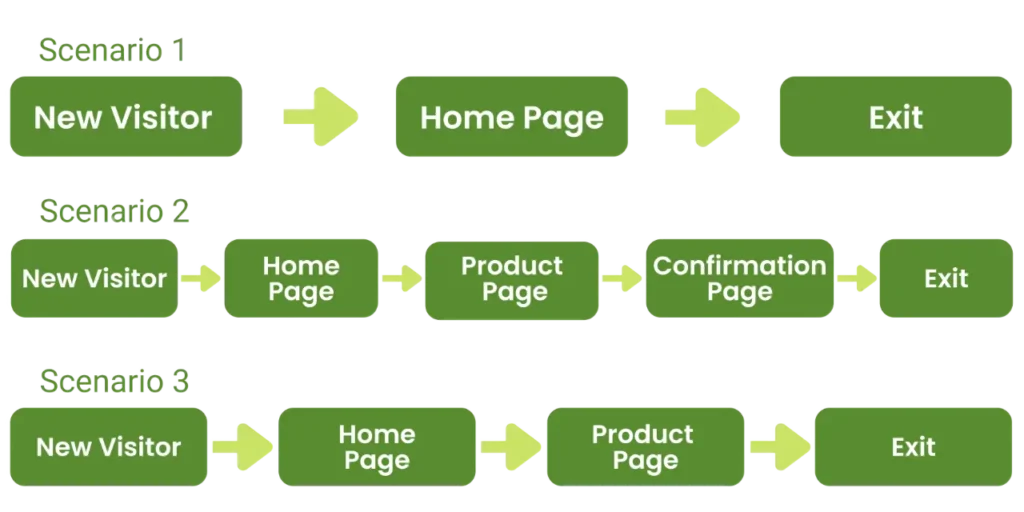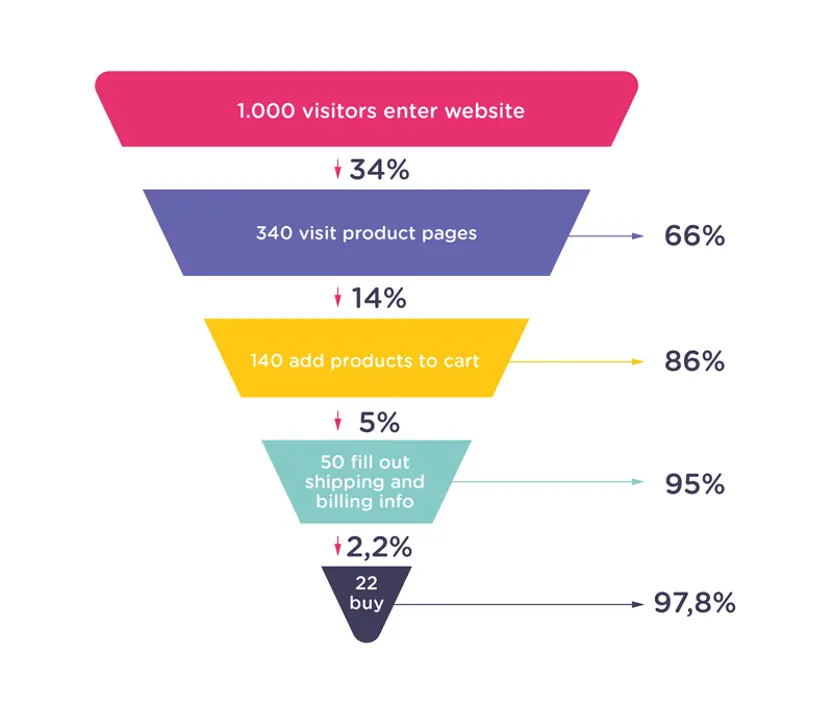The Bounce Rate vs Exit Rate question is one of the most common questions our customers ask us and there seems to be sometimes some confusion between these.
Bounce Rate and Exit Rate are metrics used in digital analytics and web traffic analysis. Are most used as success indicators, but their meaning is sometimes misunderstood, so it’s important to clarify the difference.
What is Bounce Rate?
Broadly speaking, bounce rate represents the percentage of visitors who enter a website and leave immediately, instead of staying on the site and interacting with it in a meaningful way. In other words, is the percentage of visitors to a particular website, who leave after viewing only one page.
According to the most analytics systems, including Google Analytics, a bounce is when a user leaves without interacting with the site at all.
What is Exit Rate?
By definition, exit rate is the percentage of visitors to a page on the website from which they exit the website to a different one.
Google Analytics states that the exit rate is a value that indicates the percentage of pages that broke out of the number of times the page was viewed.
So, what’s the difference?

As we can see, Google’s definitions of these metrics sound so similar, that it’s very easy to confuse the two.
But there’s one key concept that makes the difference:
Exit rate is the percentage of visits that were the last in the session, whereas bounce rate is the percentage of visits that were the only one of the session.

Let’s look at the following example, where we have a website with 4 pages:
- Home Page
- Product Page
- Confirmation Page
- Contact Us Page


Out of all of these scenarios, only two are bounces.
Even though exits occurred on all five examples, bounces occurred only on the first and fourth scenarios, because those were the only two where the visitors exited as soon as they entered the site. On every other case, the visitors visited at least two pages before exiting.
If we analyse these five scenarios using Google Analytics, we get this report:

We can make some conclusions such as: a high exit rate does not necessarily equal to a high bounce rate (since users might have landed on the page from somewhere else on the site); and on the other hand, a low bounce rate doesn’t mean a low exit rate (since bounce rate only takes into account the exits that occur on the first page the user lands on).
Bear in mind that bounces are always one-page visits, while exits can be more than one-page visits.
Which metric is more important?
The short answer is both, depending on the purpose.
A high bounce rate usually means problems with user satisfaction (can be related to content, site quality, loading speed, etc.), whereas a high exit rate usually means problems in the conversion funnel.

As a “bonus”, here some tips to optimise your conversion funnel:
- Know your audience
- Engage with your costumers
- Create useful content that answers questions
- Capture email addresses for Email Marketing purposes
- Be active on Social Media
- Utilise Reviews&Testimonials
- Create relatable content using storytelling
- Use strong CTAs
- Remove unnecessary form fields
- Be On-Hand To Help Out
Conclusion
To sum up, about bounce and exit rate, you should analyse each metric, depending on the issue you are looking to solve.
We hope to have helped to clarify these two concepts, it’s important to understand the metrics we are analysing at every step of the process and even more than that, trust that the results will help you understand your audience, their preferences and develop a strategy to improve your reach.
Stay tuned for more articles! If you have any comments on this matter, please leave a message, I’ll reply as soon as I can!







One Response